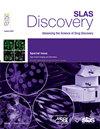Integrating AUROC and SSMD for quality control in high-throughput screening assays
IF 2.7
4区 生物学
Q2 BIOCHEMICAL RESEARCH METHODS
引用次数: 0
Abstract
High-throughput screening (HTS) assays are pivotal in modern biomedical research, particularly in drug discovery and functional genomics. Ensuring the quality and reliability of HTS data is critical, especially when dealing with the small sample sizes that are typical in such assays. This study explores the integration of two powerful statistical metrics—Strictly Standardized Mean Difference (SSMD) and Area Under the Receiver Operating Characteristic Curve (AUROC)—for quality control (QC) in HTS. SSMD offers a standardized, interpretable measure of effect size, while AUROC provides a threshold-independent assessment of discriminative power. By establishing the theoretical and empirical relationships between AUROC and SSMD, we demonstrate how these metrics complement each other and enhance QC practices. We provide parametric, semi-parametric, and non-parametric estimation methods, and demonstrate the utility of the integrated framework in real HTS datasets. Our findings support the joint application of SSMD and AUROC as a robust and interpretable approach to improving QC in HTS, particularly under constraints of limited sample sizes of positive and negative controls.
整合AUROC和SSMD用于高通量筛选试验的质量控制。
高通量筛选(HTS)分析是现代生物医学研究的关键,特别是在药物发现和功能基因组学方面。确保高温超导数据的质量和可靠性至关重要,特别是在处理此类分析中典型的小样本量时。本研究探讨了两个强大的统计指标-严格标准化平均差(SSMD)和接受者工作特征曲线下面积(AUROC)-在HTS质量控制(QC)中的整合。SSMD提供了一个标准化的、可解释的效应大小测量,而AUROC提供了一个独立于阈值的判别能力评估。通过建立AUROC和SSMD之间的理论和经验关系,我们展示了这些指标如何相互补充并增强质量控制实践。我们提供了参数、半参数和非参数估计方法,并演示了集成框架在实际HTS数据集中的实用性。我们的研究结果支持SSMD和AUROC联合应用作为一种稳健且可解释的方法来改善HTS的质量控制,特别是在阳性和阴性对照的有限样本量的约束下。
本文章由计算机程序翻译,如有差异,请以英文原文为准。
求助全文
约1分钟内获得全文
求助全文
来源期刊

SLAS Discovery
Chemistry-Analytical Chemistry
CiteScore
7.00
自引率
3.20%
发文量
58
审稿时长
39 days
期刊介绍:
Advancing Life Sciences R&D: SLAS Discovery reports how scientists develop and utilize novel technologies and/or approaches to provide and characterize chemical and biological tools to understand and treat human disease.
SLAS Discovery is a peer-reviewed journal that publishes scientific reports that enable and improve target validation, evaluate current drug discovery technologies, provide novel research tools, and incorporate research approaches that enhance depth of knowledge and drug discovery success.
SLAS Discovery emphasizes scientific and technical advances in target identification/validation (including chemical probes, RNA silencing, gene editing technologies); biomarker discovery; assay development; virtual, medium- or high-throughput screening (biochemical and biological, biophysical, phenotypic, toxicological, ADME); lead generation/optimization; chemical biology; and informatics (data analysis, image analysis, statistics, bio- and chemo-informatics). Review articles on target biology, new paradigms in drug discovery and advances in drug discovery technologies.
SLAS Discovery is of particular interest to those involved in analytical chemistry, applied microbiology, automation, biochemistry, bioengineering, biomedical optics, biotechnology, bioinformatics, cell biology, DNA science and technology, genetics, information technology, medicinal chemistry, molecular biology, natural products chemistry, organic chemistry, pharmacology, spectroscopy, and toxicology.
SLAS Discovery is a member of the Committee on Publication Ethics (COPE) and was published previously (1996-2016) as the Journal of Biomolecular Screening (JBS).
 求助内容:
求助内容: 应助结果提醒方式:
应助结果提醒方式:


